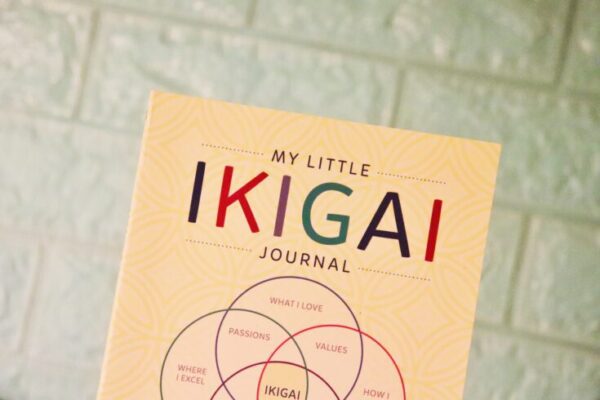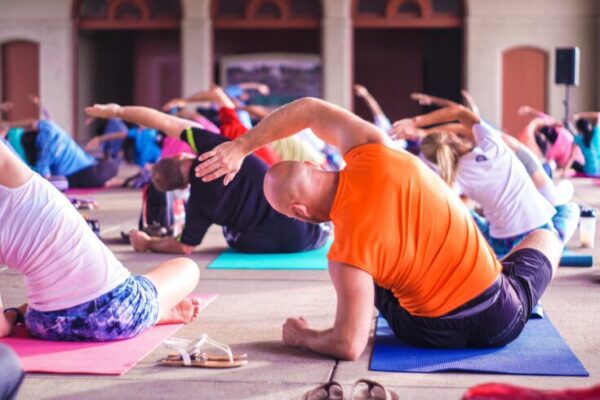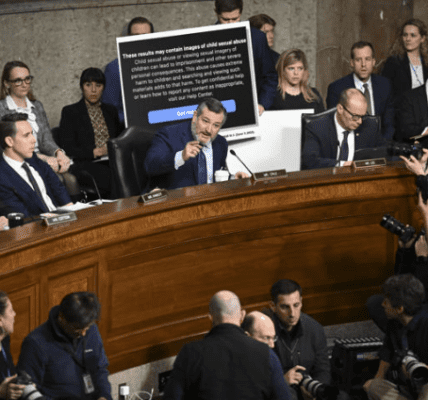Slow Life Movement
In recent years, a discernible cultural shift has taken root in the United States as an increasing number of individuals choose to embrace a lifestyle that prioritizes slowness over the relentless pursuit of busyness. This movement, commonly known as the “slow life,” is characterized by its emphasis on mindfulness, meaningful living, and a deliberate rejection of unfulfilling and frantic lifestyles. In a society where the constant hustle for productivity often takes center stage, the slow life movement emerges as a counter-cultural response, inviting people to reevaluate the pace at which they live. The Slow Life movement is not a rigid, one-size-fits-all ideology. Instead, it takes on diverse forms, allowing individuals to tailor their approach to align with personal preferences and life circumstances. Some may choose to prioritize family over work, seeking a harmonious balance that contrasts with the prevailing societal narrative. Others may embark on a journey of homesteading, opting for a more sustainable and intentional way of life that resonates with the principles of slow living.
The Slow Life movement is not a rigid, one-size-fits-all ideology. Instead, it takes on diverse forms, allowing individuals to tailor their approach to align with personal preferences and life circumstances. Some may choose to prioritize family over work, seeking a harmonious balance that contrasts with the prevailing societal narrative. Others may embark on a journey of homesteading, opting for a more sustainable and intentional way of life that resonates with the principles of slow living.
Navigating the Slow Life Landscape
One of the defining characteristics of the slow life is its flexibility and adaptability to individual needs. This section delves into the various ways in which individuals navigate the slow life landscape, highlighting the diversity of choices and lifestyles that fall under the umbrella of this movement. From minimalist living to intentional downtime and from prioritizing experiences over possessions to focusing on sustainable practices, adherents of the slow life movement chart unique paths to a more deliberate and fulfilling existence.
The slow life is not about a wholesale rejection of modernity; rather, it encourages a conscious reevaluation of priorities. It challenges the conventional markers of success and prompts individuals to question societal norms that equate constant busyness with achievement. By embracing a slow life, individuals assert their agency in defining what truly matters to them, breaking free from the relentless pursuit of external validation.
Tech Detox and Mindful Living
In an era dominated by technology, a significant aspect of the slow life revolves around conscious and intentional management of time, particularly in relation to digital devices. Slow life advocates recognize the potential pitfalls of excessive screen time and the impact it can have on mental well-being. As a result, there is a growing mindfulness movement within the slow life community that emphasizes the importance of disconnecting from the digital world to connect more fully with the present moment.
The prevalence of the hashtag “slowlife” on social media platforms such as Instagram and TikTok reflects the movement’s growing influence and popularity. The visual nature of these platforms allows individuals to share their slow living experiences, creating a virtual community that extends beyond geographical boundaries. Through posts, stories, and videos, people share their journeys, challenges, and triumphs in adopting a slower, more intentional lifestyle.
The Roots of Slow Living: Ikigai and Beyond
To understand the origins of the slow life movement, it is essential to explore its philosophical underpinnings. This section delves into the Japanese concept of ikigai, which has played a significant role in shaping the principles of slow living. Ikigai, translated as “a reason for being,” encourages individuals to lead a life worth living by understanding and aligning with their purpose. The slow life movement draws inspiration from ikigai, promoting practices such as meditation and minimalism as means to shift the focus from perpetual busyness to a more restful and content existence.
While ikigai provides a foundational philosophy, the slow life movement extends beyond cultural boundaries, incorporating ideas from various sources. Practices such as mindfulness meditation, which finds its roots in ancient contemplative traditions, have become integral to the slow life ethos. Minimalism, inspired by both Eastern and Western philosophies, encourages individuals to declutter their lives, focusing on quality over quantity and experiences over possessions.
Rising Burnout and the Antidote of Slow Living
The prevalence of burnout in American society has become a catalyst for the rise of the slow life movement. As individuals find themselves caught in the relentless cycle of toxic productivity, the negative impacts on mental and physical well-being have become increasingly apparent. This section explores how slow living serves as an antidote to toxic productivity, offering a pathway to alleviate stress and fatigue.
The concept of toxic productivity, where individuals feel the constant pressure to be productive and experience guilt when taking downtime, is addressed directly by the principles of slow living. Instead of perpetually seeking ways to fill every moment with activity, those who adhere to the slow life intentionally stay present and allow themselves the necessary rest without succumbing to guilt. This intentional shift towards a slower pace provides individuals with the space to recharge, fostering better mental health and overall well-being.
From Concept to Practice: Embracing the Principles of Slow Living
As the slow life movement gains momentum, individuals across the country are actively incorporating its principles into their daily lives. This section delves into the practical aspects of slow living, exploring how people from various walks of life are translating the concept into tangible actions. Whether through intentional downtime, connecting with nature, or cultivating a minimalist lifestyle, adherents of the slow life share their personal journeys and experiences, offering insights into the transformative power of embracing slowness.
One aspect of slow living is the intentional creation of downtime, where individuals carve out moments for rest and reflection without feeling the need to be constantly engaged. This deliberate choice challenges the prevailing narrative that associates value with perpetual activity. By creating space for rest, individuals discover the rejuvenating effects of allowing the mind and body to recharge, leading to increased creativity and overall life satisfaction.
Connecting with nature is another fundamental aspect of slow living. Whether through outdoor activities, gardening, or simply spending time in natural settings, individuals find solace and connection in the simplicity of the natural world. This connection with nature not only provides a respite from the demands of modern life but also fosters a deeper appreciation for the environment, aligning with the movement’s emphasis on sustainability.
Cultivating a minimalist lifestyle is a transformative practice within the slow life movement. By decluttering physical spaces and simplifying possessions, individuals focus on what truly adds value to their lives. This intentional simplification extends beyond material belongings to include a reevaluation of commitments, relationships, and goals. Minimalism, as a component of slow living, encourages a shift towards quality over quantity, allowing individuals to prioritize meaningful experiences and connections.
The Impact of Slow Living on Well-being
A growing body of research and anecdotal evidence supports the positive impact of slow living on overall well-being. This section delves into the ways in which embracing a slower pace of life contributes to enhanced mental health, reduced stress levels, and an increased sense of purpose. The benefits of the slow life extend beyond individual well-being, influencing broader societal attitudes towards success and happiness.
Research indicates that chronic stress is a pervasive issue in modern society, with work-related stress affecting a significant percentage of the population. The American Psychological Association reports alarming statistics, revealing that 80% of employees experience work-related stress at least once a month, and three-in-five employees experience negative impacts from work-related stress. This includes physical fatigue, cognitive weariness, and other adverse health effects.
Slow living offers a countermeasure to these stressors by encouraging individuals to prioritize self-care and mental well-being. Practices such as mindfulness meditation, a staple of the slow life, have been shown to reduce stress and improve overall mental health. By fostering a more intentional and present-focused mindset, slow living provides individuals with tools to navigate the challenges of modern life while maintaining a sense of balance.
Beyond stress reduction, the slow life has been associated with increased creativity and a deeper sense of purpose. When individuals intentionally slow down and engage in activities that bring them joy and fulfillment, they often discover untapped creative potential. Whether through artistic pursuits, personal projects, or simply enjoying the beauty of everyday moments, slow living becomes a catalyst for unlocking creativity and rekindling a passion for life.
The emphasis on quality over quantity in slow living extends to relationships as well. By prioritizing meaningful connections and nurturing authentic relationships, individuals experience a profound sense of community and belonging. This shift away from superficial interactions towards deeper connections contributes to a more fulfilling and purpose-driven life.
The Future of Slow Living in America
As the slow life movement continues to gain momentum, the question arises: what does the future hold for this cultural shift towards mindful living in America? This section explores potential trajectories for the movement, considering its role in shaping cultural norms, fostering sustainability, and influencing policy decisions. The slow life movement has the potential to transcend individual lifestyle choices and become a catalyst for broader societal change. One aspect of the future of slow living lies in its impact on cultural norms surrounding success and happiness. As more individuals recognize the value of a slower, more intentional life, societal expectations may undergo a transformation. The relentless pursuit of external markers of success, such as wealth and status, may give way to a more nuanced understanding of fulfillment that encompasses well-being, purpose, and meaningful connections.
One aspect of the future of slow living lies in its impact on cultural norms surrounding success and happiness. As more individuals recognize the value of a slower, more intentional life, societal expectations may undergo a transformation. The relentless pursuit of external markers of success, such as wealth and status, may give way to a more nuanced understanding of fulfillment that encompasses well-being, purpose, and meaningful connections.
The slow life movement also intersects with the growing interest in sustainability and environmental consciousness. By promoting practices such as minimalism, sustainable living, and a deeper connection with nature, slow living aligns with the principles of environmental responsibility. This alignment may contribute to a broader cultural shift towards more sustainable practices, influencing consumer behavior, corporate policies, and government initiatives.
In terms of policy, the slow life movement could inspire discussions around work-life balance, mental health support in the workplace, and the reevaluation of societal expectations. If the movement gains enough momentum, there is potential for policy changes that prioritize the well-being of individuals over the relentless pursuit of productivity. This could include measures such as flexible work hours, mental health resources in workplaces, and a reevaluation of educational systems that often perpetuate toxic productivity.
Additionally, the slow life movement may inspire innovative urban planning and design that prioritizes spaces for community engagement, nature integration, and a slower pace of life. The creation of environments that encourage mindful living and foster a sense of connection with both people and nature could become integral to future city planning.

Read More:
In conclusion, the slow life movement in America represents more than just a personal lifestyle choice; it signifies a broader cultural shift towards mindfulness, meaningful living, and a rejection of toxic productivity. By examining its roots, practical applications, impact on well-being, and potential future trajectories, it becomes evident that the slow life movement has the power to redefine success and happiness in contemporary American society. As individuals continue to seek refuge from the overwhelming pace of modern life, the slow life movement stands as a beacon, inviting people to embrace a slower, more intentional way of living that prioritizes well-being, purpose, and connection.




